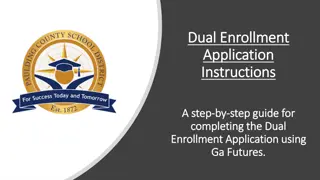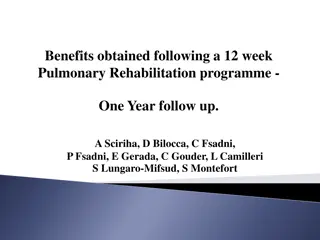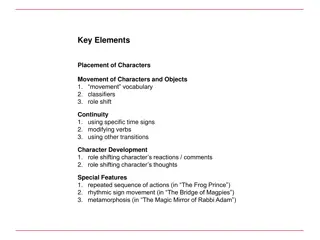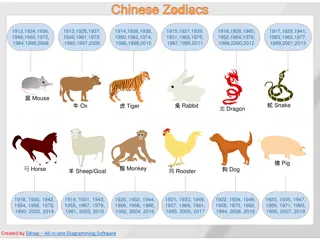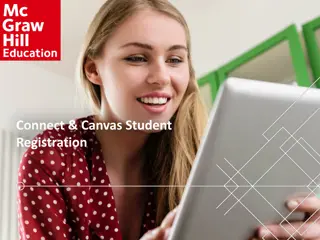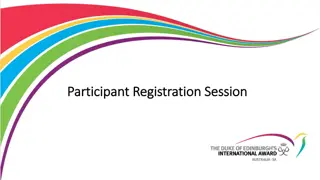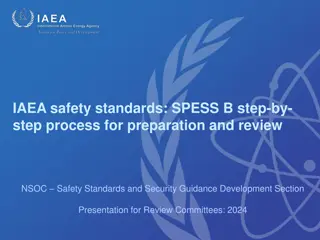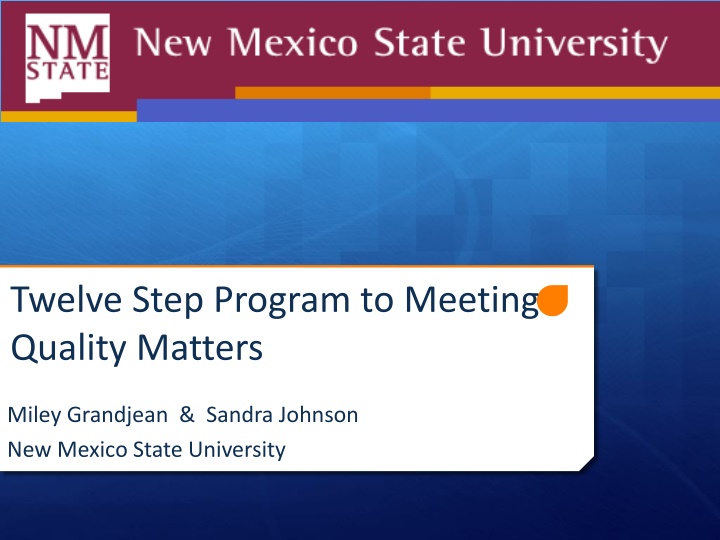
Online Course Improvement: 12-Step Program to Enhance Quality Matters
Discover the 12-step program designed by Miley Grandjean & Sandra Johnson at New Mexico State University to enhance the quality of online courses. Explore essential steps, checklists, and strategies for improving student experience and learning outcomes.
Download Presentation

Please find below an Image/Link to download the presentation.
The content on the website is provided AS IS for your information and personal use only. It may not be sold, licensed, or shared on other websites without obtaining consent from the author. If you encounter any issues during the download, it is possible that the publisher has removed the file from their server.
You are allowed to download the files provided on this website for personal or commercial use, subject to the condition that they are used lawfully. All files are the property of their respective owners.
The content on the website is provided AS IS for your information and personal use only. It may not be sold, licensed, or shared on other websites without obtaining consent from the author.
E N D
Presentation Transcript
Twelve Step Program to Meeting Quality Matters Miley Grandjean & Sandra Johnson New Mexico State University
Agenda Introductions OCIP overview Checklist 1 Sample QM course activity Questions and comments Thank you!
Some Background on Online Course Improvement Program (OCIP) at NMSU OCIP beginnings and support Overview of program and expectations Cohort I-V- completions and dropouts (1Y+); Cohort I (N2O) Methods of providing support includes mentoring, workshops, open labs
Developed Checklists Discovered that participants needed more guidance and support Developed the 8 checklists aligned to the 8 general standards of Quality Matters Use checklists for training, course design and revision of online learning environments
Step 1: Welcome Email(1.1) Send a welcome email to students that contains the following- WELCOME to your course WHERE to find your course HOW to access the course WHAT to click first to get started
Step 2: What do students do first? (1.1) Students have accessed their course. What do they do now? Provide specific steps on what you want them to do to get started.
Step 3: The Foundation-Your Syllabus(1.2) Provide access to your syllabus States the purpose of the course Explains how the content is structured and carried out Contains a course schedule Explains delivery modalities (online or blended) Discusses modes of communication Describes types of learning activities States how learning will be assessed
Step 4: Course Outline/Pacing Guide (1.2) A course outline or pacing guide provides an overview of your course and should include Times Places Scheduled Events Assignments Assessments Due Dates
Step 5: Netiquette (1.3) An etiquette or "Netiquette" statement provides- o Expectations for communication o Examples of netiquette considerations: o Expectations for the tone and civility used in communication o Expectations for email content o Speaking style requirements (abbreviations, emoticons, etc) o Spelling and grammar expectations o Discussion board participation
Step 6: Student Resources (1.4) Academic support Library Writing assistance Math assistance Any specific student resource required or suggested for your course Tech Assistance
Step 7: Prerequisites Needed (1.5) Information about prerequisite knowledge (i.e., passed BIO 100, ?????) Any required competencies (i.e., Native Spanish speaker, ACT score of 20 or above, BA in English) Information should be found within the course in documents linked to the course Supporting material provided to the student by another means
Step 8: Competencies & Tech Skills (1.6) General as well as course-specific technical skills Examples of technical skills might include Using the learning management system Using email with attachments Creating and submitting files in commonly used word processing program formats Copying and pasting Downloading and installing software Using spreadsheet programs
Step 9: Instructor Information (1.7) o Initial introduction should- o Include the instructor s name, title, field of expertise, email address, phone number, and times when the instructor is typically online or may be reached by phone. o Create a sense of connection between the instructor and the students o May include personal information such as hobbies, family, travel experiences, etc. o May include a photograph
Step 10: Student Introductions (1.8) Student introductions help to - Create a welcoming learning environment Establish community Open lines of communication between students and the instructor Instructions for the introduction should include- Guidance on where and how students should share their introduction May ask students to respond to specific questions. May provide an example of an introduction and/or start the process by introducing themselves
Lets apply what we have learned! Here is a sample of an online course getting started page Use your rubric and your checklist for standard 1 Identify areas of strength and improvement Work with your neighbor! Share what you see
Websites for Help with Best Practice o Online Course Improvement Program-NMSU (wiki) o OCIP Website o Las Positas College o Teaching Online-University of South Florida o Instructional, Communication, and Information Technology
Resources Images from http://office.microsoft.com/en-us/images/ Online Course Improvement Program Resource Wiki https://ocip.pbworks.com Quality Matters http://www.qmprogram.org/
Thank you for attending! Online Course Improvement Program New Mexico State University

